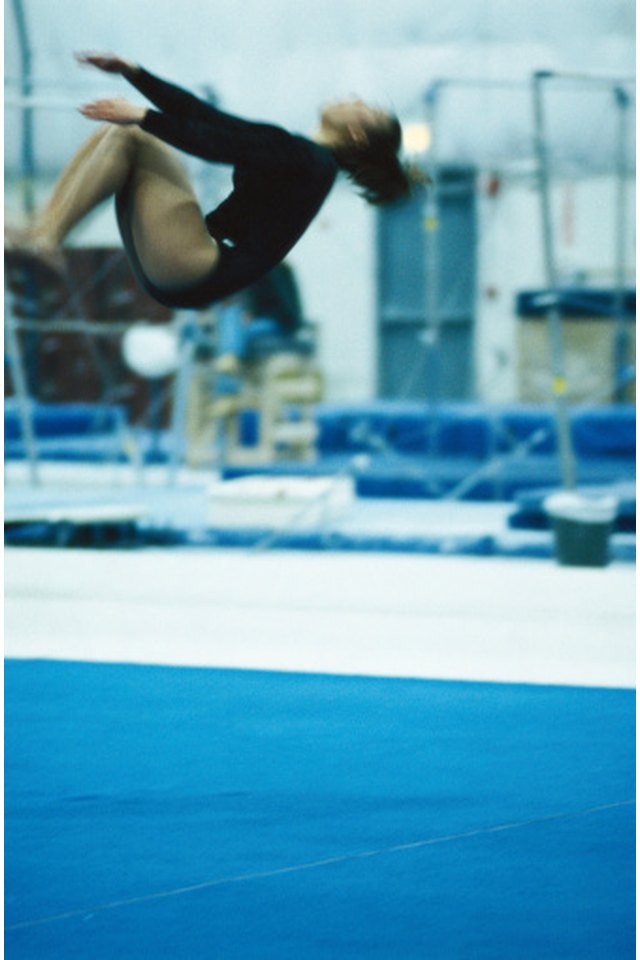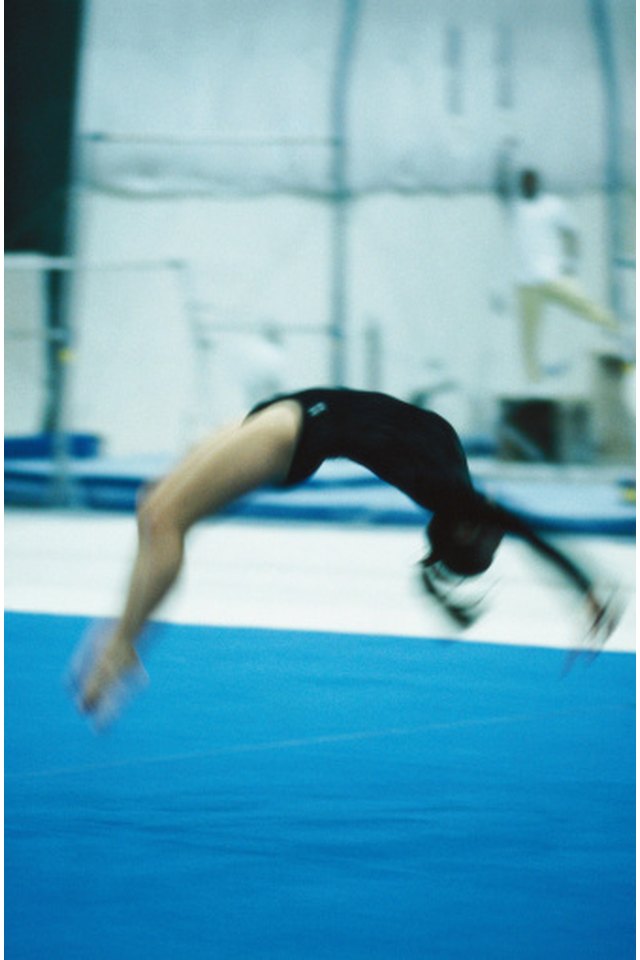Types of Back Flips

Back flips or backward somersaults are a class of acrobatic moves in which the body performs a stunt with the back facing the landing zone. Back flips can be done by gymnasts, divers and stunt enthusiasts. A back flip can performed on flat ground, a diving board and even a trampoline.
Straight or Lay Out

Ryan McVay/Photodisc/Getty Images
A straight back flip or lay out position is one where the body does not bend at the joints. For this back flip, the individual will arch the back and keep the rest of the body tight to flip the body completely around. This type of back flip is usually done with a round off or springboard to give the body enough momentum to flip while straight. This is a more advanced type of back flip that individuals will master after first mastering the pike and tuck.
Pike
A pike back flip is a form of somersault that involves the body being straight and bending directly at the waist. Individuals performing this type of flip must keep their legs and torso straight while folding their body in half at the waist. Toes should be pointed and arms should loosely wrap around the backside of the legs to hold the pike position together mid-air.
Tuck
A tuck is one of the first types of back flips individuals learn in acrobatics. This type of back flip has the knees bent and brought up toward the chest in a fetal-like position. Heels are tucked in tightly toward the buttocks while the toes are pointed. The position should be kept tight, and hands should grasp just around the base of the kneecap where the shins meet the knees.
Free or Twisting
A free dive involves one of the three finishing positions mentioned before, which start with a twist. An individual will start with a half twist or full twist of the body and in mid-air pull her body out of the twist using the natural momentum to create a tuck, pike or lay out position. This type of acrobatic skill is very advanced and cannot be completed until an individual first masters all three of the above back-flip positions as well as a basic twist on its own. This type of flip is usually done on a springboard diving board, in a tumbling pass after a back handspring, or as a dismount for the balance bean apparatus.
References
Writer Bio
Shailynn Krow began writing professionally in 2002. She has contributed articles on food, weddings, travel, human resources/management and parenting to numerous online and offline publications. Krow holds a Bachelor of Science in psychology from the University of California, Los Angeles and an Associate of Science in pastry arts from the International Culinary Institute of America.
